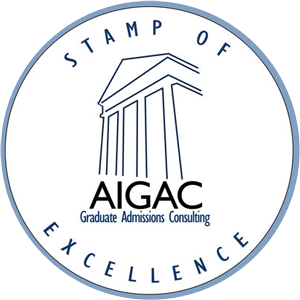Understanding the Environments and Cultures of the Schools
Welcome back to the 2-part series helping you create a school list that makes sense for you! If you missed Part I, hold your horses! Head over back to Part I to learn how to develop your Big List.
At this point, your Big List should include schools that exist in geographies where you are willing to live, and offer career opportunities that will set you onto a fulfilling path of success. In the last two steps, you’ll find out if your programs are ideal learning environments for you and if you will truly enjoy the connections made during your time in graduate school.
Step 3: Understand the Learning Environment & Opportunities
The next step to further narrow your Big List down is to understand the learning environment that you will be immersed in for the next few years. The learning environment is influenced by factors such as: class size, curriculum offered, hands-on practicums or fellowships, leadership programs, global programs, and methods of teaching such as the case method.
You must reflect on your past learning experiences, and figure out in which environment you best thrive. MBA class sizes, for instance, can range from 150 to nearly 1,000 students. Ask yourself:
- Do I want to get to know most of the people in my entire MBA class?
- Or, am I OK with only getting to know some of my classmates?
Do research on the actual courses, requirements and concentrations currently offered. If you know you want to develop skills in digital marketing, make sure to scratch off any program with limited offerings in digital marketing. If you’re someone who is making a significant career pivot, then you’ll want to prioritize programs with hands-on consulting projects that will help you speak to a relevant “real world” experience in future job interviews. When you have coffee chats with current students at your intended programs (more on that later), you should ask them about their learning environments and how it ultimately impacted their overall experience. Once you get a sense of what matters to you in terms of the learning environment, you’ll be able to cross off at least 5 schools from your Big List.
Step 4: Get to Know the School’s Culture, Values & “Personality”
At this point, your school research should shift over to school culture, values, and personality. Do not skip this last step! Not only will you spend a significant chunk of time with the people in your program, but they will continue to be a part of your professional and personal life as future networking contacts, and, hopefully, life-long friends.
Culture is difficult to define, and unfortunately, there are many buzzwords used such as “collaborative”, “warm”, and “friendly”, that further obscure a program’s culture. Culture refers to an underlying attitude based on norms, traditions, and beliefs. It’s how people do things. In a graduate school setting, culture can refer to how students socialize, how competitive the recruiting or academic environment can be, how willing students are to help each other, and how inclusive the program is to people from diverse backgrounds.
Schools and their current students are poised to present the most positive aspects of their programs to persuade you to go there. It’s your job to conduct further vetting and connect with students on a more intimate level. Ask students at your schools the tough questions:
- What has been their major pain point in their experience?
- Is there anything they were disappointed to learn about their program?
- Are there any major changes they are demanding from their school leadership?
By asking these questions, you will be able to truly understand the school’s culture and values. For example, if attending a program that is committed to diversity, equity, and inclusion (DEI) is important to you, then ask students what the school is doing to support DEI. Your conversations with current students will give you the best indication of the feel of the program, as well as how people spend their time. If you’re still excited about a school after these conversations, then you have found a final school for your list!
At the end of this step, your list should be cut down to approximately 6-12 schools. These are schools that:
- exist in geographies where you are willing to live,
- offer career opportunities that will set you onto a fulfilling path of success,
- provide a learning environment where you will thrive, and
- embody a culture that aligns with who you are and the strengths you bring to the program
Congrats! You are now way ahead of the curve and are ready to start your application process!
Author: Priscilla




Leave a Reply